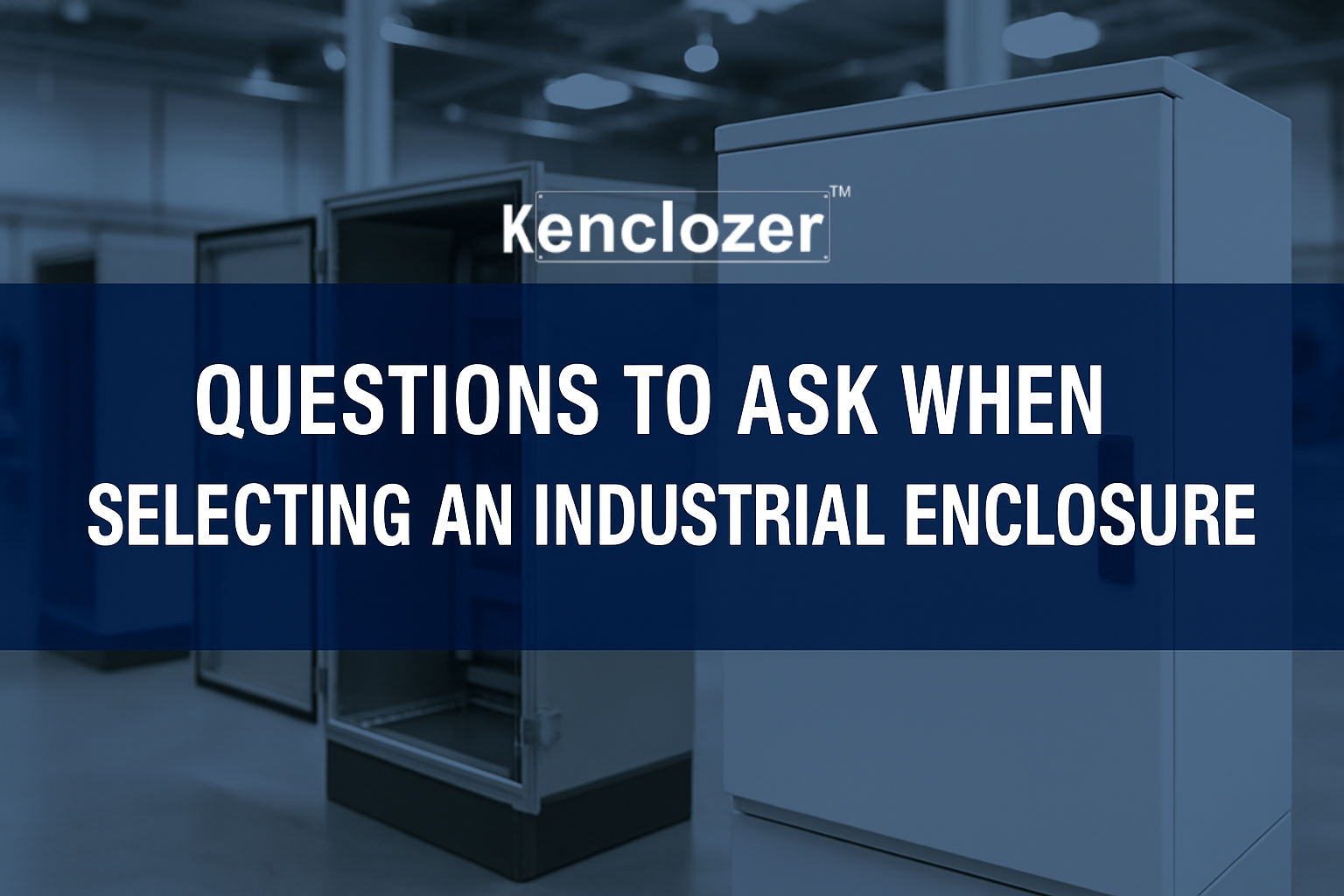Questions to Ask When Selecting an Industrial Enclosure
The proper industrial enclosure should be selected in order to safeguard electrical or electronic equipment in harsh conditions. The consequences of using an inappropriate enclosure can be severe operational or equipment failure or, worse still, safety issues to any business, regardless of whether you are working in manufacturing, chemical processing, renewable energy, or telecom.

1. What Type of Environment Will the Enclosure Face?
The most initial thing that you should ask is the operating environment. The knowledge of environmental conditions will assist you in selecting the right enclosure to withstand such conditions as weather, dust, moisture, corrosion, or physical impact.
Common Factors:
- Indoor vs. Outdoor
- Exposure to chemicals or salt spray
- Dust levels and washdowns
- High/low temperatures or humidity
2. What Size and Mounting Option Do I Need?
Think about the space required to house your equipment and allow airflow, wiring, and future upgrades. Also, consider how the enclosure will be mounted.
- Wall-mounted: Common for compact electrical panels
- Floor-standing: Ideal for large, heavy-duty control systems
- Pole-mounted: Suitable for outdoor or public infrastructure setups
3. What Material is Right for My Application?
The enclosure material dictates its impact resistance, corrosion resistance, heat resistance and price effectiveness.
Enclosure Material Comparison
| Material | Pros | Cons | Best Usage |
|---|---|---|---|
| Mild Steel | Powerful, cheap | Becomes rusty without paint. | Used inside clean and dry areas |
| Stainless Steel | Long-lasting and resistant to corrosion | High in cost and weighs more | Food, pharma, marine sector & chemical industry |
| Aluminum | Light and dissipating heat | Low impact resistance | Heat-producing electronics |
| Polycarbonate | Non-corrosive, UV-stable, light | Low-heat tolerance | Renewable, outdoor telecom, renewable energy |
| Fiberglass | Resistant to chemicals, outstanding at insulation | Develops cracks when subjected to mechanics | Harsh environment industrial plants |
4. What Protection Ratings Are Required?
Enclosures must be of certain IP or NEMA rating to allow them to be safe and work well under harsh conditions.
- IP Ratings define resistance to dust and water
- NEMA Ratings include dust, water, corrosion, and more
Common IP Ratings Explained
| IP Rating | Protection Level | Typical Use Case |
|---|---|---|
| IP20 | Basic protection against fingers and large objects | Indoor panels in dry locations |
| IP54 | Dust-limited ingress + protection from splashing | Workshops, plant floors |
| IP65 | Dust-tight, water jets from any direction | Outdoor junction boxes, solar setups |
| IP66 | Heavy seas or powerful water jets | Industrial washdown areas |
| IP67 | Temporary immersion in water | Underground, coastal, or exposed enclosures |
5. What Accessories or Customizations Are Needed?
The design of industrial enclosures regularly must be tailored to accommodate particular equipment and to assist with safety.
Examples include:
- Cable glands for sealed entries
- Cooling systems for heat dissipation
- Mounting plates, DIN rails, and locking systems
- Transparent doors for visual access without opening
Always check whether the manufacturer supports pre-drilling, modular options, or custom labeling.
FAQs
Conclusion
Doing so when it comes to industrial enclosures is the key to avoiding critical risks in operations and high costs of downtimes. Poor selections of material and protection rating or even future exposure in environment all contribute to poor long-term performance and safety.
It does not matter whether you are attaching a control panel on the factory floor or equipment on a rooftop solar array; ensure that your enclosure is constructed to suit your specific requirements. And never mind price first, mind quality, certification, and particularly the long life of your product.